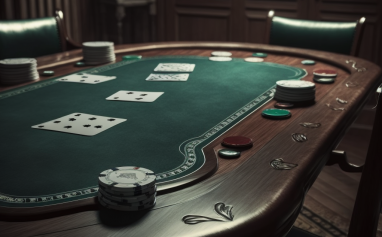HOW TO PLAY RUMMY ?

Rummy is a popular card game that’s enjoyed by people of all ages, with various versions played around the world. The basic objective in most Rummy games is to form matching sets or runs of cards. Here’s a detailed guide on how to play the classic version of Rummy, including setup, gameplay, and scoring.
Setup
- Number of Players: Rummy can be played by 2 to 6 players.
- Deck: A standard 52-card deck is used. For more than 4 players, consider using two decks.
- Dealing: Players draw cards to determine the dealer. The person with the highest card deals first. In a two-player game, each player gets 10 cards. For 3 or 4 players, each gets 7 cards. For 5 or 6 players, each gets 6 cards.
- The Stock and Discard Pile: The remaining deck is placed face down as the stock pile, and the top card is placed face up beside it to start the discard pile.
Objective
The main goal in Rummy is to form melds. Melds can be either sets or runs. A set consists of three or four cards of the same rank (e.g., 7-7-7). A run is a sequence of three or more cards of the same suit (e.g., 4-5-6 of hearts).
Gameplay
- Starting the Game: The player to the left of the dealer starts the game and gameplay proceeds clockwise.
- Drawing: On a player’s turn, they must start by drawing a card either from the stock pile or the discard pile.
- Melding: After drawing, the player may lay down any melds they have. Melding is optional; players may choose to wait for better combinations.
- Laying Off: Players can also add cards to existing melds on the table, whether they’re their own or others’. This is also optional.
- Discarding: To conclude their turn, the player must discard one card onto the discard pile, face up.
Winning the Game
The round ends when a player gets rid of all their cards by melding, laying off, or discarding. Alternatively, the round can also end without a winner if the stock pile runs out.
Scoring
After a player has won, the other players count the value of the cards left in their hands. The points are tallied as follows:
- Aces are worth 1 point.
- Face cards (K, Q, J) are worth 10 points each.
- Numbered cards are worth their face value.
The winner scores the total points of all other players’ remaining cards. The game can be played over several rounds, with the winner being the person who reaches a predetermined score, often 100 or more, first.
Strategies
- Holding onto cards: Sometimes, it’s strategic to hold onto cards to prevent others from melding or laying off.
- Paying attention to the discard pile: This can give you insights into what your opponents might be holding or seeking.
- Discarding high-value cards: If you’re not close to winning, discard high-value cards to minimize potential penalty points.
Variations
There are many variations of Rummy, such as Gin Rummy, 500 Rummy, and Indian Rummy, each with its own set of rules and strategies. It’s always a good idea to clarify the version and any house rules before starting a game.
Rummy is a game of skill, strategy, and a bit of luck, making it a favorite pastime for many. Whether you’re playing casually with friends or more competitively, understanding the basic rules and strategies is key to enjoying and excelling at the game.







Add comment